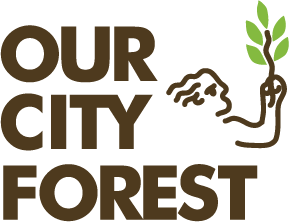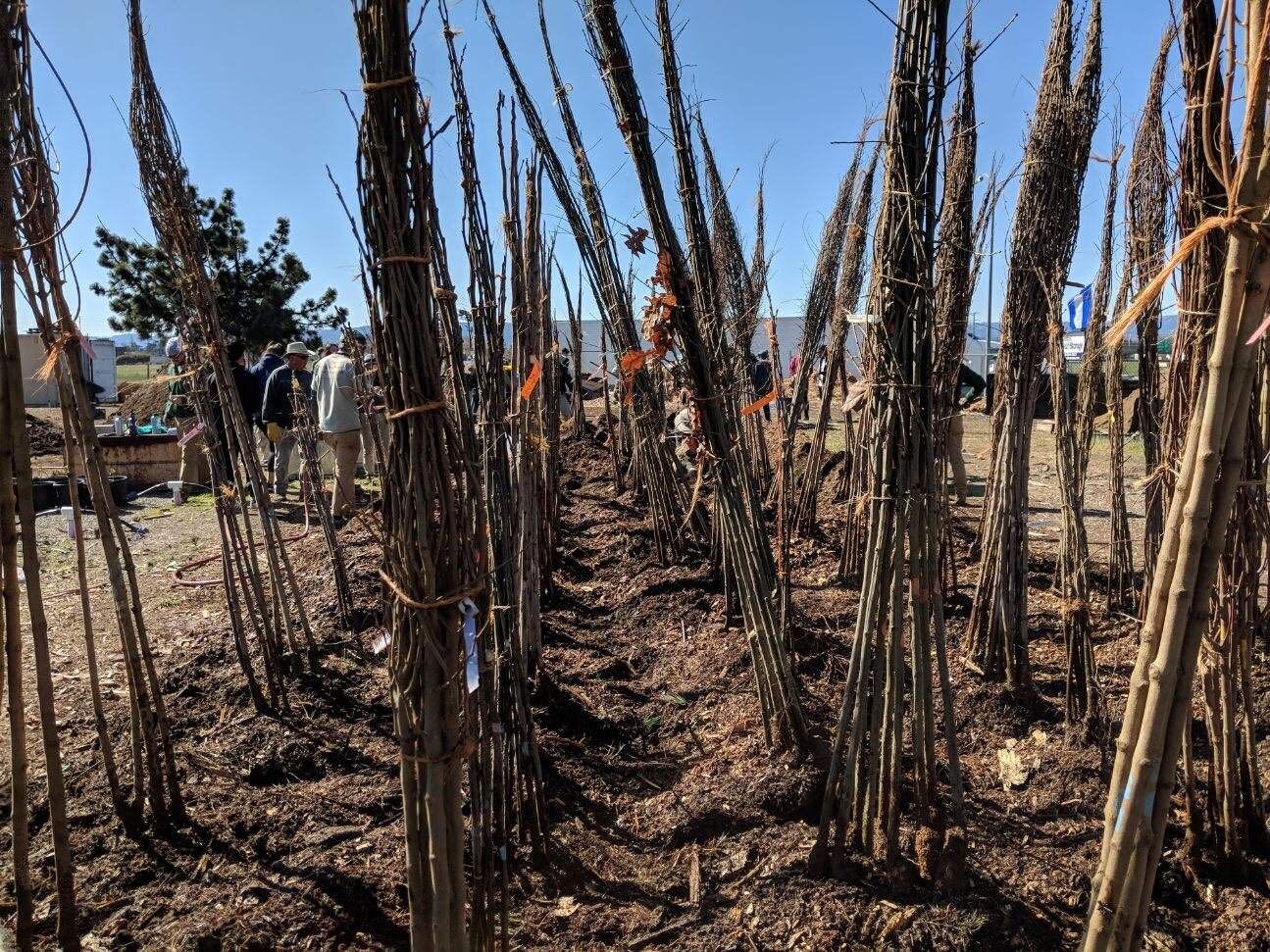Q: What is a bare root tree?
A bare root tree is a tree that is harvested from the ground for the purpose of transporting it so that it can then be either re-planted or potted. For our purposes at the nursery, the bare root trees that get shipped in will be planted into 15 gallon pots.
Q: How many trees do we receive for bare roots?
We have received anywhere from 1200-1500 bare root trees for the past few bare root seasons. This number can change depending on the demand and stock remaining in our nursery. In anticipation of this large delivery, considerable time and volunteer hours have been dedicated to rearranging the trees already at the nursery in order to make room for the new ones. Despite the ample amount of new trees, our hope is to incorporate them into the nursery as smoothly as possible.
Q: Where do the bare root trees come from? How far of a distance do they travel?
The trees come from J. Frank Schmidt & Son Co., a wholesale nursery located in Canby, Oregon. The distance between San Jose and J. Frank Schmidt & Son Co. is about 645 miles. You can learn more about the nursery, which distributes a significant percentage of its deciduous trees to nurseries throughout western North America and Canada, here. In order to preserve the roots, the trees are bundled in twine and transported in a refrigerated truck. The same truck also stores several other bundles of bare roots to be distributed elsewhere. This may be hard to imagine considering our delivery alone consists of almost 1,600 trees, but the trees are so efficiently bundled that several deliveries can be made in one trip! Once the trees are successfully delivered, they can either be transplanted into 15-gallon pots or planted directly into the ground. Orchards often utilize bare root trees, in part because they are convenient, efficient and economical to transport. For our purposes at Our City Forest, considering the eventual goal is to sell these trees to residents, the bare root trees will be transplanted into 15-gallon pots.
Q: Are there particular types or species of trees that fare better through the bare root process (which includes harvesting, transporting, waiting and finally, transplanting) than others?
As far as the bare roots operation goes at OCF, our team only works with deciduous trees. This is because in order to be harvested from the ground and transferred hundreds of miles away and still survive, the trees must be dormant. The bare roots season happens when it does (mid-February to early March) in order to time planting with the dormant season. This year planting is set to start on February 21st.
Q: What kind of conditions do the trees require prior to being transplanted?
Before the arrival of the 1481 trees coming in this year, a trench will be built for the purpose of keeping the trees moist and cool--and therefore alive. The trench can be pictured as something like this: A long, raised pile of well-mixed soil amendment and mulch with a channel carved directly through the middle. The trees will then be propped into the trench, roots on the downside, and the exposed roots will be subsequently covered with the surrounding mulch-soil mix. Assuming it gets watered regularly (two times a day), the trench will serve as a temporary holding space that will protect and maintain the roots of the trees until it is their time to be potted. Provision of wet and cool conditions for the roots in the time between delivery and transplanting is crucial for the trees’ chance of a smooth transition and proper development. Dry roots on the other hand lead to decreased survivability.
Q: Why are the bare root trees we receive in February so important for the nursery?
The bare roots inflow makes up a huge percentage of the nursery tree stock. Bare roots also allows for a more diverse stock. The nursery typically orders 20-30 different species of deciduous trees; this year we will be working with 27 different species! A primary goal of the nursery, and OCF as a whole, is to practice and promote diversity in urban forestry. Because the nursery supplies its stock with environmental health in mind, and therefore an effort to evade monoculture whilst promoting diversity, receiving a wide variety of bare root trees helps to support the OCF mission. The way in which bare roots is approached at OCF embraces, and therefore helps to advance, the reality that diverse forests--and ecosystems in general--embody longevity, health and beauty. Having said this, variety in species makes it possible to plant trees in a way that will enhance the biodiversity of the urban forest. The bare roots season is also important because it represents and encourages community involvement, building new connections, and educating about why the urban forest is a special part of our everyday lives.
Q: What are the advantages and disadvantages of bare root trees?
Bare root trees are an economical and efficient way to stock the nursery. Buying trees as bare roots as opposed to already-potted trees from other nurseries is more cost-effective, especially taking into account the amount of trees we receive during bare roots. Transplanting bare root trees is efficient because these trees are much easier to transport and store than potted trees. The bare root plantings also allow for the team, and the volunteers learning from the team, to take special and specific care of each tree that they transplant (i.e. as opposed to a tree that is donated or sold to us from another nursery). In terms of disadvantages, one is that the timeline for growth can be challenging. For example, the maple, zelkova and elm tree species are typically ready to be planted about three to four months after they are potted. Ginkgo and linden trees, conversely, take longer (about 6 months) to root. This difference in development among species can cause inconvenience because certain species may not coincide with demand. Another disadvantage is that the process does not include a single evergreen tree, so the evergreen population must be supplemented from other sources.
Q: How well have the bare root trees from last year grown and developed thus far?
The survival rate among last year’s bare root stock is 95 percent. As of now, these trees are healthily rooted and ready to be planted!
Q: What role do volunteers play in the bare roots process?
During the bare roots rush, volunteer recruitment efforts at the nursery are more important than ever! This is because there is such a large number of trees to transplant, and the OCF team can use as much help as it can get. Because of this, bare roots implements two volunteer shifts per day--one in the morning and one in the afternoon. As we are a community nursery, anyone looking for a meaningful way to help their environment is welcome to participate!
Q: How does bare roots strengthen community engagement and learning?
Bare roots is a perfect opportunity to build upon the interrelations of our San Jose community in a way that provides insight into what it takes to grow high quality trees. During bare roots, all kinds of people come together for a common cause--from corporate groups, to students, to families and friends. The aspect of community participation in bare roots is also so exciting because the same volunteers who help transplant the trees will have the opportunity later on to plant the same trees throughout their city!




